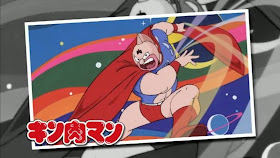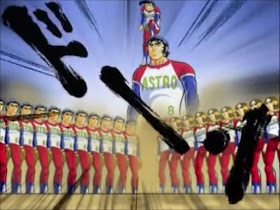You may boo.
 |
| This is the only title that doesn't have eyecatch... Early-80s, afterall |
I Love Strange Faces. Come Forth! Kimen Flash
1982-1987's Highschool! Kimengumi was the sequel to Motoei Shinzawa's original San-nen/Third Year Kimengumi from 1980-1982, but the anime looks to start from the beginning of San-nen. Whereas earlier comedy hit Dokonjo Gaeru was more of a traditional comedy title, Kimengumi went straight for being absolutely weird for its comedy, making it a definite precursor & innovator to the modern gag manga, which arguably started with Sexy Commando Gaiden. The plot focuses on transfer student Yui Kawa, who immediately becomes friends with Chie Uru as well as five boys (Rei Ichido, Go Reietsu, Jin Daima, Dai Monoboshi, & Kiyoshi Shusse), who together call themselves the Kimengumi/Funny Face Club. The Kimengumi essentially love being weird & odd for the sake of making others laugh... But the major focus is that they're all weird.












